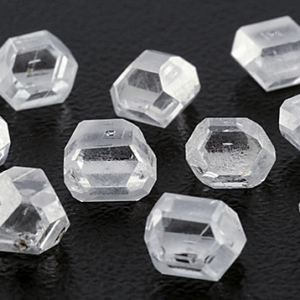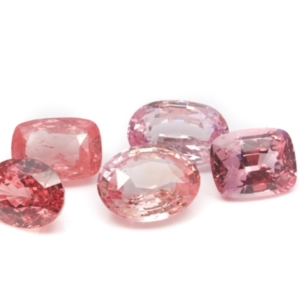Marcasite stone – properties, virtues & benefits
Marcassite stone, also known as white pyrite, is a semi-precious stone that has been used for centuries for its healing properties and aesthetic qualities. Discover the characteristics and uses of this unique stone in our comprehensive guide.
CHARACTERISTICS OF MARCASSITE
- Chakra: Solar plexus.
- Properties: Positive energy, protection, healing, personal development, creativity.
- Astrology: Mars.
- Zodiac: Aries.
- Elements: Fire, Earth.
- Colors: Golden yellow, Silver.
- Hardness: 6-6.5 on the Mohs scale.
- Chemical Formula: FeS2 (iron disulfide).
- Associated god: None.
PIERRE MARCASSITE – HIS HISTORY
Marcassite stone, also called “fool’s gold” for its gold-like luster, was named after the ancient Arabic word “marqachita”, which meant all pyrite minerals at the time. Although it could be mistaken for gold in the past, it was first distinguished from pyrite in 1814 by French mineralogist René Just Haüy, then accurately described in 1845 by Austrian mineralogist Wilhelm Karl Ritter von Haidinger. These two scientists greatly contributed to the development of knowledge and the enrichment of gem collections in Europe. Modern techniques for testing stones no longer allow for confusion.
Marcassite stone has been used since prehistoric times to produce fire by percussion with a hard rock such as granite, flint or quartz. Upper Paleolithic, Mesolithic and Neolithic man used this stone because of its combustion by exothermic oxidation, caused by iron and sulfur particles torn off on impact. The resulting sparks were then directed at tinder or other fine plant material to start a fire. Today, percussion ignition kits containing a lighter, flint and marcasite are commercially available.
.
Interest in marcasite stone has been fickle through the centuries. In Europe, it has mainly been used for ornamentation, following social trends and codes. Initially, it was used to embellish brooches, medallions and shoe buckles, before losing popularity for a long period. Its revival came in the 19th century, when large quantities of marcasite were imported to Paris. The French used this stone in the same way as antique jewelry, which was very popular in Paris and Geneva. During the Second EmPire, French women were particularly fond of this jewelry, whose price was equivalent to that of gems and precious metals. In Victorian England, it was cut in a regular, symmetrical pattern (round or square) and then set to create a sparkling pavage, like rivers of diamonds. Women readily associated this sparkling stone with their refined or lacy outfits. The rococo style in vogue during the reign of Louis XV was the insPiration for its combination with colored glass pastes and enamels. Its popularity waned, however, when its production became less qualitative and too commonplace. Nevertheless, a few decades later, it became popular again, succeeding the black diamond of the Roaring Twenties. With the economic crisis in full swing, it became a fashionable stone, mounted on jewelry insPired by the Art Deco style characteristic of the 20s.
Currently, the vintage trend is bringing marcasite stone back into fashion by pairing it with silver to give historical authenticity to clothing, reminiscent of the Victorian era. Peru was once the main source of the large slabs of this rock used to make mirrors, but they are now nowhere to be found. European mines, in particular the Jura and German deposits, provide small specimens of around two carats. It’s the jeweler’s meticulous work that reveals the luminous brilliance characteristic of pyrite gems. The “rose” cut combines a flat base with triangular facets, taking advantage of the mineral’s opacity to reflect light. Mounted in pavé on white metals or silver, they offer a particularly brilliant sparkle.
MARCASSITE STONE – ITS ORIGIN AND COMPOSITION
Pyrite and marcasite are very similar in that they have the same composition, hardness and appearance, and come from the same deposits. Only their structure differs, with pyrite being more stable than marcasite. Their names have different etymological origins, one referring to a Persian province, the other to the ancient Greek word for “fire”. Marcasite is pale yellow-bronze, coppery-gray and opaque, and creates characteristic inclusions in other minerals, such as laPis lazuli, making each specimen unique. Composed of ferric sulfide, it is found in sedimentary rocks such as chalk and carbonaceous rocks such as coal. It is formed during diagenesis, a chemical process that transforms sediments into rocks, in an environment deprived of air and in the presence of hydrogen sulfide. For this process to occur, the temperature must be low or moderate. The iron oxides present in the rock are first transformed into ferric sulfide, then into ferric disulfide.
The pH of the medium in which diagenesis takes place is decisive: an alkaline pH favors the formation of pyrite, while a neutral or acid pH favors the formation of marcasite. The latter is unstable in contact with air and highly sensitive to humidity, which inevitably causes marcasite samples to weather, transforming them into ferric sulfate and sulfuric acid. To slow down this phenomenon, it is possible to apply a specific varnish to the sample, but this only delays the process. Mineralogy specialists, whose collections are old, have observed that this chemical reaction also alters boxes and labels exposed near minerals degraded to sulfate.
Marcassite stone can be found in the form of nodules, boudins or mamelonned kidneys, which are enveloped by a goethite iron cap, resulting from an oxidation phenomenon. Sometimes, the alteration is so severe that pseudomorphosis occurs, with goethite replacing marcasite entirely. If the nodules are fragmented, they reveal an aggregate of needle-like crystals organized into rays (fibroradial structure) that have a pewter-white luster, but raPidly tarnish on contact with air. The stone is rarely found as isolated crystals, but when it is, it has a silvery-metallic luster and an elongated, tabular appearance, more rarely prismatic. The crystals form a complex array of multiple macles with a so-called “cock’s crest” or “arrowhead” arrangement, with other thinner crystals lying parallel to these macles.
The main deposits of marcasite stone are in South and Central America (Peru, Bolivia, Mexico), Europe (Spain, Romania, Sweden) and the USA. In the past, its rich ferric disulfide content made it an essential element in sulfuric acid production.
.

MARCASSITE STONE – VERTIES AND PROPERTIES
The stone in question is associated with the quest for ultimate well-being. It attracts universal energies and promotes the propagation of positive energies in the physical world. It helps the wearer find the cause of disorders, as well as the root of karmic and psychosomatic difficulties. It can help protect the body against throat or skin disorders and is useful for combating excess body heat.
It is said to have the ability to regulate oxygen in the blood, which has a beneficial effect on the resPiratory system. The lungs would function more easily, and their frequency and calm would be attenuated. This stone is particularly suitable for practitioners of alternative medicine.
In connection with the divine, it helps soothe emotional wounds and can be used as psychic protection. Its positive energy comforts people who feel discouragement, anxiety or frustration, and gives them the strength to face life’s misfortunes and difficulties. It promotes inner balance and helps free oneself from negative emotions such as disappointment and discontent.
Marcasite stone is associated with sPiritual and physical benefits. It promotes the propagation of positive energies and helps find the cause of psychosomatic problems. It can also protect against throat and skin disorders, as well as excessive body heat. It regulates oxygen in the blood, helPing to ease breathing and soothe the lungs. It soothes emotional wounds and can be used as psychic protection. It encourages the wearer to find their place in the world, listen to their inner self and face life’s challenges. It reflects the energy of gold and is a vector of success, hapPiness and power. It rebalances the chakras, helPing to align and harmonize the aura. It strengthens the body, helps to better assimilate nutrients during digestion and improves grounding in the physical world.
PHYSICAL MARCASSIA
Marcasite stone is renowned for its beneficial effects on the psychological level. It is often used to combat negative thoughts and boost self-confidence. It is also considered useful for boosting self-esteem, develoPing creativity and reducing feelings of stress and anxiety. Some people also believe that marcasite stone can improve memory and concentration.
PHYSICAL MARCASSITIS
From a physical healing perspective, marcasite has beneficial properties. It is reputed to help resolve resPiratory problems, such as asthma and upper resPiratory tract infections. The stone is also associated with regulating digestion and improving metabolism, as well as reducing muscle and joint pain, and improving blood circulation. In addition, marcasite is known for its antioxidant properties and its ability to strengthen the immune system.

MARCASSITE STONE – CLEAN AND RECHARGE
Like all stones, marcasite may need regular cleaning and recharging to maintain its properties and beneficial effects. Here are some common methods for cleaning and recharging marcasite stone:
Cleaning:
- Place marcasite stone in salt water for several hours (caution, this method is not recommended if the stone is very fragile or contains metallic inclusions)
- Pass marcasite stone under running water for a few minutes
- Place the marcasite stone on a bed of salt for several hours
- Smoke the marcasite stone with sage or incense
.
Loading:
- Place the marcasite stone on a cluster of quartz crystals or geodes for several hours
- Expose marcasite stone to sunlight for a few hours (caution, this method is not recommended for very fragile stones or those containing metallic inclusions)
- Place the marcasite stone on a Pile of salt for several hours.
It is recommended to clean and recharge the marcasite stone after each use or at least once a month.
WHERE DOES THE NAME MARCASSITE COME FROM?
The name “marcasite” probably comes from the Arabic “marqachita”, meaning “pyrite”. Indeed, marcasite is a crystalline form of pyrite, a stone that is often confused with marcasite. However, although the two stones are similar, they differ in their atomic structure and physical properties. It’s also interesting to note that the term “marcassite” has been used in the past to refer to other sulfide minerals, but is now generally reserved for the crystalline form of pyrite.
WHICH CHAKRA DOES MARCASSITE ACT ON?
Marcasite is often associated with the solar plexus chakra, which is located in the abdomen area. This chakra is linked to self-confidence, willpower, inner strength and digestion. Marcasite is considered a stone that can help balance and stimulate the solar plexus chakra, promoting self-confidence and decision-making. It can also help regulate digestion and relieve stomach upsets linked to stress and anxiety.
WHICH ASTROLOGICAL SIGN IS ASSOCIATED WITH MARCASSIA?
The astrological sign associated with marcasite is Aries. Stones associated with Aries are often stones that promote energy, strength, courage and optimism, and marcasite is no exception. It is considered a stone that can help boost inner strength and self-confidence, which is particularly beneficial for people born under the sign of Aries. What’s more, marcasite is also associated with the planet Mars, which is the planet governing the sign of Aries.
SUMMARY OF THE MARCASSITE STONE
Marcassite stone is a semi-precious stone that is often used in jewelry making. It is composed of iron sulfide and has a shiny metallic appearance. Marcasite is often confused with pyrite due to their similar appearance, although pyrite is harder and denser than marcasite. Marcasite stone has been used since antiquity to make jewelry and ornaments. It enjoyed a period of great popularity in the 18th century, but has since become less common due to its tendency to tarnish over time. Marcasite jewelry often requires regular maintenance to preserve its brilliant appearance. Marcasite is also used in gemmotherapy for its alleged healing properties.

